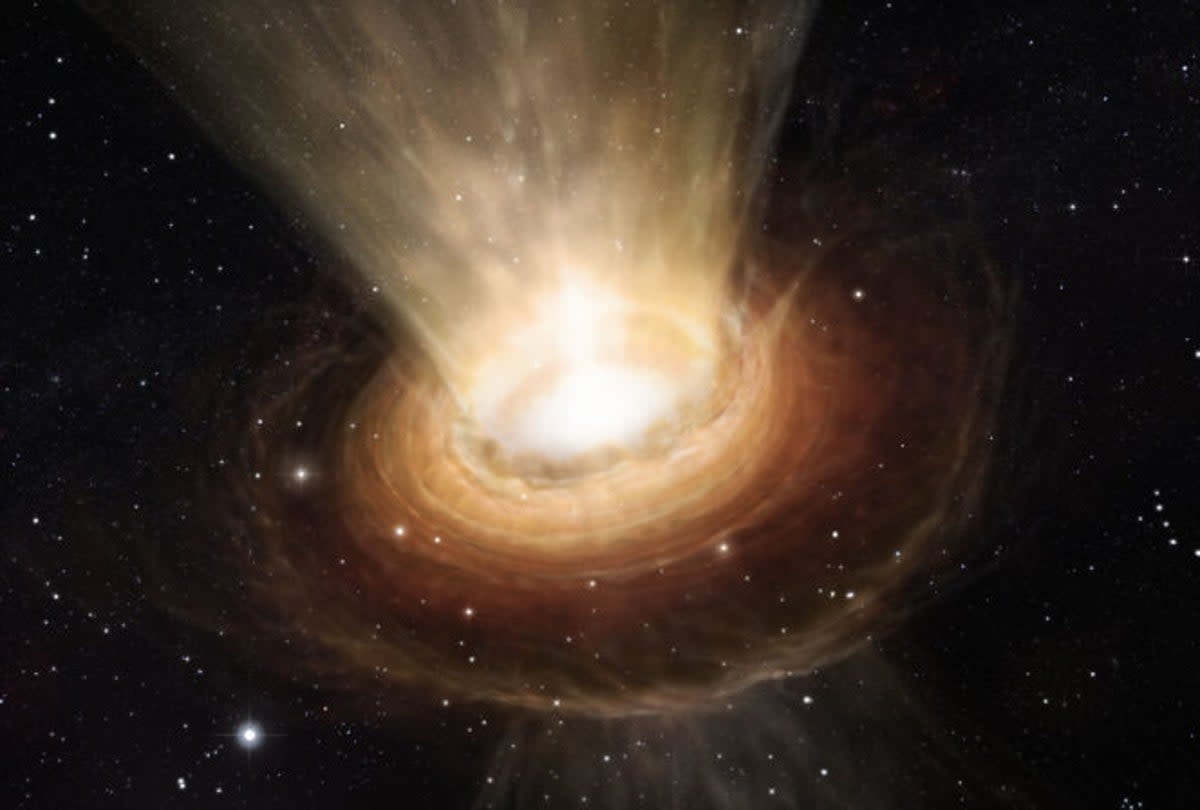A supermassive black hole, though it eats avidly, takes a long time to grow. Therefore, knowing how black holes billions of times more massive than the Sun formed in the first billion years of the universe continues to be a puzzle.
But new work by an international team of cosmologists suggests an answer: streams of cold matter composed of mysterious dark matter feeding black holes born from the deaths of massive primordial stars.
“There’s a recipe for a 100,000-solar-mass black hole at birth, and it’s a 100,000-solar-mass primordial star,” said Daniel Whalen, a cosmologist at the University of Portsmouth. The Independent. “In the current universe, the only black holes we’ve discovered all originate from the collapse of massive stars. So the minimum mass for a black hole must be at least three or four solar masses.”
But the gap between a 4-solar-mass star and a 100,000-solar-mass star is huge, a “massive” star that, if centered on the Sun, would extend to the orbit of Pluto. Over the past 20 years, Dr. According to Whalen, much of the research on quasars in the early universe — the extremely bright centers of galaxies powered by supermassive black holes — has focused on the finely tuned conditions that allow them to form. A massive primordial star.
But in a new article published in the journal Nature, Dr. Whalen and colleagues use a supercomputer model of cosmic evolution that, rather than developing from highly specialized conditions, quasars naturally form and collapse into “seeds” from a set of initial conditions. , although relatively rare, are much less delicate. And it all starts with dark matter.
“If you look at the total content, what you might call the energy content of the total mass of the universe, 3 percent is in the form of matter as we understand it,” explained Dr. Whalen – made up of protons and neutrons and electrons, hydrogen, helium and others. But “24 percent is in the form of dark matter, and we know it’s due to the motion of galaxies and clusters, but we don’t know what it is.”
That is, the theme seems to interact only with ordinary matter through gravity, and it is the attraction of dark matter that has created the largest scale structure in the universe: the cosmic web. Dr. According to Whalen, in the early universe, large regions of dark matter collapsed under their own weight into long filaments, dragging ordinary matter with them, forming a network of filaments and their intersections.
Galaxies and stars will eventually form within the filaments, in particular, in the material-rich cross-sections of the filaments.
“We call them the halo, the cosmological halo,” Dr. Whalen said, emphasizing the intersections, “and we think that’s where the primordial stars formed first.”
Previous ideas say that in order to form a primordial star large enough to give birth to a supermassive black hole and a quasar in the first billion years of the universe, a halo must grow to a massive rate under special conditions: no other stars are nearby, and the molecular hydrogen gas is formed to keep it cool. , and supersonic flows of gas keep the halo turbulent. Until the halo is cool and turbulent enough that it cannot coalesce into a star, extending its growth phase until it is finally born massive.
Dr. Whelan noted that when a massive star burns up, ends its life, escapes and falls into a black hole, it needs to access gas to grow massively, “because the way a black hole grows is it swallows up gas.”
But rather than requiring more stringent conditions for the formation of a massive star and eventually a massive black hole, Dr. A simulation by Velan and colleagues suggests that cold gas flows in a halo from filaments defined by dark matter in the cosmic web. Many factors are required for primordial star formation in older models.
“If cold accretion flows are driving the growth of these haloes, they must have hit those haloes,” Dr Whalen said, “so quickly they hit them with so much gas that the turbulent gas would have prevented them from collapsing and forming a star.”
When they simulated such a halo fueled by cold accretion flows, the researchers saw the formation of two massive primordial stars, one the size of 31,000 Suns and the other 40,000 Suns. The seeds of supermassive black holes.
“It’s very simple. A 20-year problem disappeared overnight,” Dr. Whalen noted. Whenever there are cold flows in the cosmic web that feed gas into a halo, “there’s so much star formation and massive seed formation that there’s enough turbulence to create a massive quasar seed.”
This is a finding that matches the number of quasars ever observed in the early universe, noting that large haloes were rare in the early universe, and quasars were also present.
But the new work is a simulation, and scientists want to actually observe a quasar forming from the early universe in nature. New instruments like the James Webb Space Telescope may make this a reality relatively soon.
“It would be powerful to look at a web” to see the birth of black holes within a million or two million years of the Big Bang, Dr Whalen said.
You may also be interested | In the video
The farthest point in the universe we’ve ever seen.





:quality(85)/cloudfront-us-east-1.images.arcpublishing.com/infobae/KTKFKR763RBZ5BDQZJ36S5QUHM.jpg)